Last Updated on September 29, 2021 by motologs
Sikkim is one of the most beautiful destinations to visit in India. It shares a sensitive international border with three countries. Sikkim is surrounded by Bhutan on the east, China on the North, and Nepal on the western side. Anyone planning to visit the Northern part of Sikkim needs special permission from the government. In this post you will find all the details and information – Dzongu Travel Guide – Permit, Homestay, and Itinerary.
When you talk about North Sikkim, most people think of the commercial and touristy Lachen and Lachung routes. One can visit Yumthang Valley and Zero Point via Lachung and Gurudongmar Lake via Lachen. However, many offbeat destinations around North Sikkim are relatively less explored. This means that you will find remote, unexploited, and relatively virgin places with fewer tourists. One such beautiful place is Dzongu in North Sikkim.
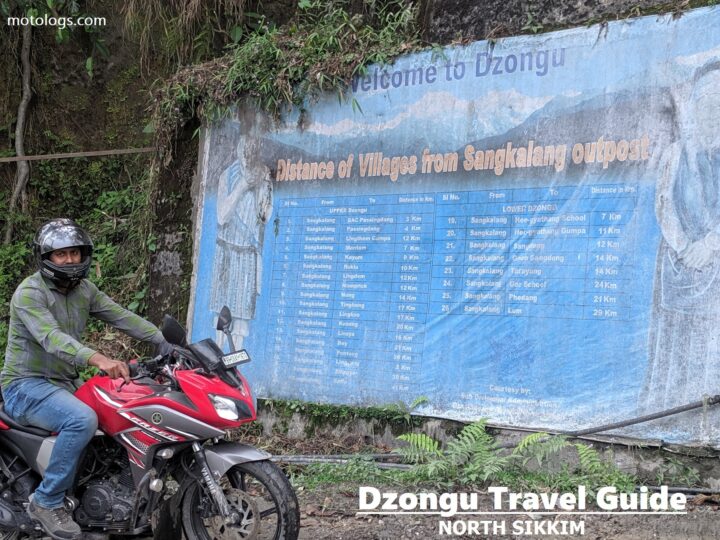
Page Contents
Dzongu Travel Guide – Permit, Homestay, and Itinerary
About Dzongu
Dzongu offers a spectacular view of the mighty Kanchenjunga mountain range. The roads to reach Dzongu and further up are an adventure in itself. There are sporadic villages in the Lower and Upper Dzongu area. Dzongu has everything to offer that you may need to rejuvenate yourself. Monasteries, beautiful hikes & trails, dense enchanting rainforests, snow-covered peaks, mountain rivers, waterfalls, hot-spring, rice terraces, riverside camping, fishing, suspension bridges, wildflowers, fluttering Tibetan prayer flags, floating butterflies, and beautiful Himalayan birds singing their melody all day long. On top of it, the most beautiful thing about Dzongu is the indigenous Lepcha people and the homestay experiences. Homemade deliciously delectable organic food and the warmth of the Lepcha people are truly a refreshing experience.
Who should visit Dzongu?
Dzongu is a perfect place for nature enthusiasts, adventure junkies, spiritual minds, solitude seekers, wilderness lovers, and young couples alike. It is also a perfect get-away offbeat destination for a family trip. Be aware that there will be no tea shops and Maggi soup cafes mushrooming around. The only little shop we encountered in Dzongu was near the Lingdem Hot springs.
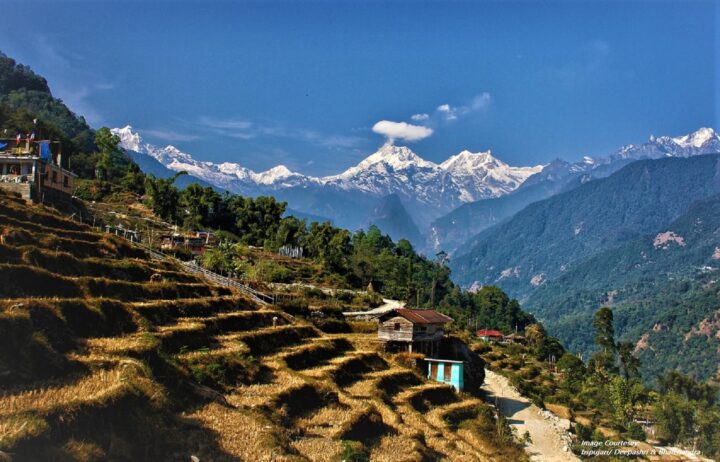
Dzongu Altitude
- Upper Dzongu and Lower Dzongu altitudes vary between 700m to 6000m
- Lingthem Lyang Homestay: 1337m or 4386ft
- Lingthem Monastery: 1612m or 5288ft
- Mantam Lake*: 884m or 2900ft
- Tingvong Monastery: 1654m or 5426ft
- Keushong Lake: 4511m or 14800ft
Dzongu Weather
- November, December, and January are extremely cold but with guaranteed clear views.
- February, March are comfortable with clear views.
- April is erratic with mixed weather.
- May, June, July, August is Rainy Season and should be avoided.
- September and October are again ideal for Dzongu.
*Mantam Lake was formed in 2016 after almost 1 km high and 500m wide mountain face fell in a massive landslide into the river. This blocked the river and formed a 50m deep lake. The scar of the landslide on the mountain is visible from space. Eventually, the pressure by the lake burst the mouth and drained all water. Now only a sandy-rocky beach remains with river streams flowing over it. Massive house-sized boulders still sit around the mouth of Mantam Lake with a friendly reminder of Nature’s supremacy.
Read along to get the complete Dzongu Travel Guide – Permit, Homestay, and Itinerary.
Dzongu Route Map
Dzongu is a vast reserved biosphere area triangulated between the Teesta river in the southeast, Tholung Chu River in the northeast, and the mighty Kangchenjunga in the west. Kangchenjunga is the third highest mountain in the world at 8,586 m (28,169 ft). Take the road going left from Mangan right after the fuel station to divert for Dzongu. The road is called Rinzing Namgyal Marg. Follow the road to your Homestay. Download offline maps for guidance but be aware that some of the road markings are inaccurate on google maps. Use satellite view 3D for a better idea of roads and terrain. Network coverage is uneven in the Dzongu area.
Dzongu consists of sparsely populated small villages scattered around the mountains. They appear in this order: Lingdong > Lingthem > Lingdem (Hotspring) > Lingthem > Tingvong > Tolung > Sakyong > Pentong.
The road is motorable till Tingbong/Tingvong and further up it follows a trekking route. You will have to cross the rocky but motorable river bed to reach Tingvong. During monsoon, it is only accessible by the non-motorable suspension bridge.
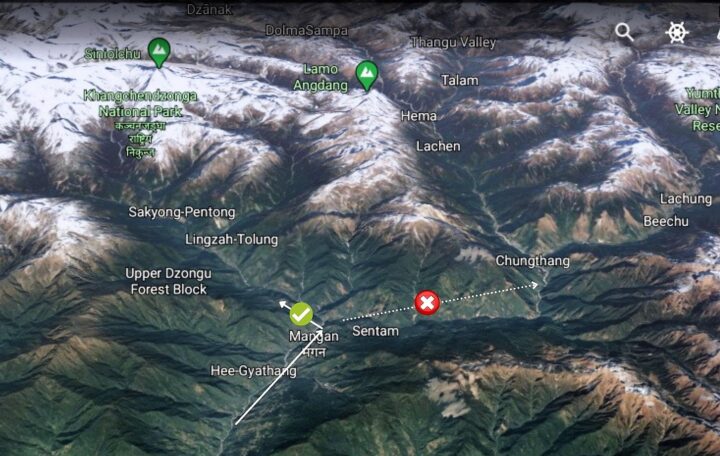
How to reach Dzongu?
There is no public transport in Dzongu. You can either travel in your own Bike/Car or reserve a vehicle. Please note that the roads to Dzongu are not in good condition and are steep uphill. It gets worse during the rainy season with slippery rocks and slushy mud. Some parts of Dzongu may remain cut off due to frequent landslides during the monsoon. You will have to cross the rocky river bed to reach the upper Dzongu villages.
First reach Siliguri by Train, Bus, or Flight to Bagdogra Airport. Once you reach Siliguri, you can hire or rent a vehicle to Passingdang. Otherwise, take the local bus or a shared jeep to Mangan. From Mangan hire a local taxi to Passingdang or your Homestay. If you are driving by self then take the Singtam-Dikchu road to Mangan. Divert from Mangan to Dzongu.
Taxi Fare / Public Transport for Dzongu
- Reserved Car – Siliguri to Mangan: INR 1500 to INR 3500 depending upon Vehicle Type
- Shared Jeep – Siliguri to Mangan: INR 100 to INR 200
- Bus Fare – Siliguri to Mangan: INR 100 to INR 150
- Gangtok to Mangan Taxi and Shared Jeep
- Mangan to Dzongu (Only Reserved Transport): INR 1500 to INR 2000
If you are not traveling in a group, it would be wise to consult your homestay owner to help you get the best deal on any incoming vehicle to Dzongu. In all cases, your best resource person for accurate and helpful advice would be your host. Lepchas are incredibly warm and helpful people. Don’t hesitate to ask for any suggestions or help.
Best Time to Visit Dzongu
The best time to visit Dzongu would be around February-March and September-October. December and January are relatively cold but offer a clear sky translating into majestic views of Kangchenjunga. It doesn’t snow in Dzongu. Avoid rainy season and monsoon as there are frequent landslides and road blockages. The roads also become dangerous to drive on during rains. Adventurists may drive to Dzongu anytime but there will be a lot of risks. Consult your host in the planning phase for accurate advice. Check weather reports in advance and plan accordingly for a clear view of Kanchenjunga. But Dzongu is not just about viewing Kangchenjunga. Dzongu itself is an experience.
Permit for Dzongu
Since Dzongu is a restricted area, all travelers must carry a valid permit pass and present the same at the Dzongu entry check-post. To visit Dzongu you will need to apply for a permit from the District Magistrate office situated in Mangan. You must have a valid reservation or booking in one of the approved homestays in Dzongu to get a travel permit. After booking a homestay in Dzongu you can directly come to the Mangan DM office and apply for the permit. It doesn’t take much time for approval and you can get the permit on the same day.

However, The best way to get a Dzongu Permit would be to ask your homestay to arrange it. They will charge INR 100 to INR 200 per person for the Dzongu permit and will arrange it before your arrival. You can get a digital scan via WhatsApp or Email, get it printed, and present the same at the check-post in Sankalong to enter Dzongu. While returning from Dzongu you can submit the original copy.
Documents Required for Dzongu Permit
- Valid ID Proof with the address of all travelers
- Passport size Photo of all travelers
- Sikkim Travel Card
Dzongu Bike/Car Permit
There is no separate requirement to get permission for your vehicle when traveling to Dzongu. Make sure you carry all the valid documents in original when traveling to Sikkim in your Bike/Car. Those also visiting Lachen and Lachung in North Sikkim need a vehicle permit too which you can read here.
- Driving License (DL)
- Registration Certificate (RC)
- Vehicle Insurance
- Pollution Certificate
Dzongu Permit Checkpost – Sankalong
Right before you enter the Dzongu protected area there is a check-post in Sankalong. You will have to submit the original copy of your permit here. If you only have the duplicate copy, they will accept it and ask you to submit the original copy when you return. You will get the original copy at your homestay from the host.
Indigenous Lepcha Tribe
In Dzongu, there are no Hotels. Your only option is to stay in one of the many homestays around Dzongu. The local population is called Lepcha. They are the indigenous inhabitants of the Dzongu area. Lepchas themselves believe that their root lies in the Mayel kingdom in the shadow of the mighty Kanchenjunga. Their daily routine is family-oriented and involves agriculture and dairy. They get all they need from nature. The houses are built using stones and wood.
Language in Dzongu
Most homestay owners converse well in Hindi and English. Within the family, Lepcha people speak the Nepali dialect. There was no communication issue anywhere in Dzongu. “Khamri” is the traditional Lepcha way of saying “Hello’.
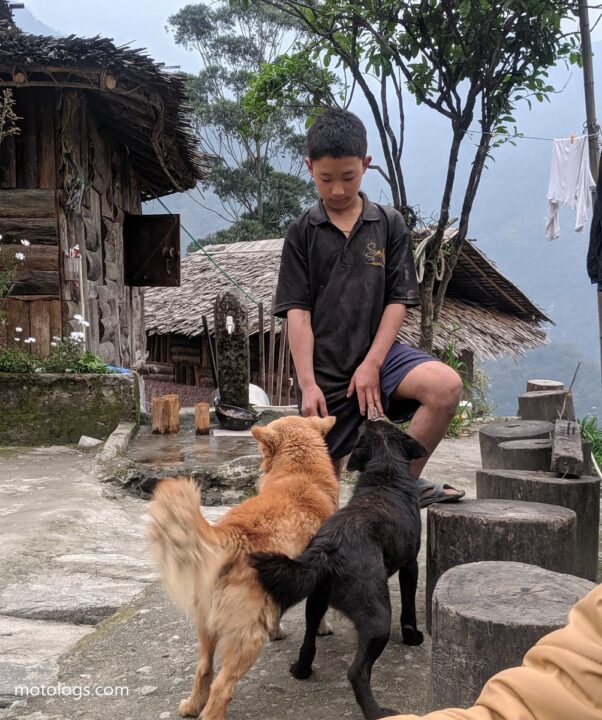
‘Khamri’
is the traditional Lepcha Greeting.
Where to Stay in Dzongu?
Homestays are your only option as there are no hotels in Dzongu. Camping in the wild is prohibited. One must obtain prior permission from the administration for any camping activity. You may also consult your host for camping advice. Once you enter Dzongu, head straight to your homestay. There are several homestays in Dzongu. Some are easy to reach while some are situated deep into the Upper Dzongu area. All the homestays provide two delicious unlimited meals along with breakfast and evening snacks. You also get tea whenever you wish. The price for Homestays in Dzongu typically ranges between INR 1200 to INR 1500 per day per person including all meals and stay.
Daily Cost of Homestay in Dzongu
The average daily cost for homestays in Dzongu is INR 1200 – INR 1500 per person per day including breakfast, two meals, evening snacks, milk tea, and private room stay. Any additional requirement is made available for extra charges. Eg. Chi or Tongba (Local Beer for INR 100).
Dzongu Itinerary
The itinerary for Dzongu depends on why you are traveling. If it’s a quick break then should at least spend 3 days In Dzongu. For a slow-paced relaxed rejuvenation spend around 5 to 7 days in Dzongu. It would be ideal to spend your Dzongu travel in more than one homestay. This will ensure that you enjoy everything that Dzongu has to offer while absorbing the culture and beauty of Dzongu. For the ultimate Dzongu experience you need to include a 3-day trek (and +2 days to return) to reach Keushong valley and lake. It is also referred to as Keushong Tso Lake or Kishong Lake and is situated 4,500m above sea level. The lake is considered a sacred place for Lepchas and is referred to as the crown jewel of Dzongu.
2 Day Itinerary for Dzongu
- Day 1: Arrival in Dzongu at your Homestay. Get acquainted. If you have enough time then hike or drive to the ancient Lingthem Monastery. Come back and enjoy the surroundings while sipping Local Beer fermented from millets and served in a bamboo mug with a bamboo straw. It’s called Chi. Have your delicious Dinner and plan for the next day with the host.
- Day 2: Drive to Lingdem Sulphur Hotspring in Upper Dzongu after breakfast. Do not miss to soak yourself in for at least half an hour. Extremely relaxing and cures many skin problems. It also rejuvenates your skin. There is a separate room for Gents and Ladies. Take a stop at Mantam Lake and enjoy crossing the Suspension bridge as well as the traditional Lepcha bamboo bridge. You may try stacking Zen stones in the river bed and break my record of 11 Stones. I enjoyed the activity so much that I came back again the next day. Hike into the 2-hour forest trails right behind the Lingthem Lyang Homestay.
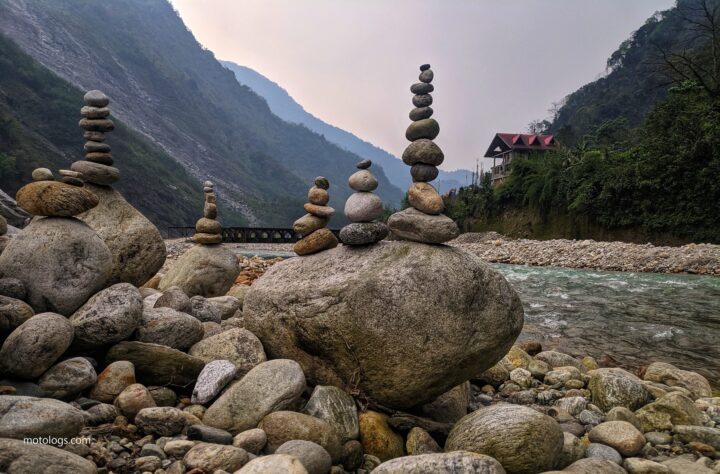
3 Day Itinerary for Dzongu
- Day 1: Same as above.
- 2nd Day: Just like above minus the 2-hour forest trail that you may enjoy on the next day.
- Day 3: Enjoy the forest trail in a slow-paced manner. The forest is absolutely enchanting with wild plants, floating butterflies, and numerous mini waterfalls. The entire forest comes alive in the morning with plenty of birds and butterflies around. Drive to Tingbong village and come back.
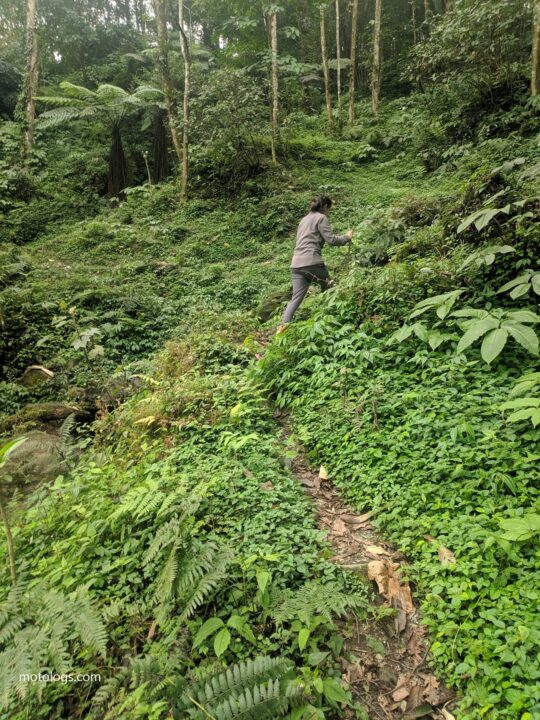
5 Day Itinerary for Dzongu
- Day 1, 2 and 3: Same as above.
- Day 4: Move to another homestay in Tingbong/Tingvong. Enjoy the scenery around. Soak in the nature. Hike around.
- Day 5: Hike to the Tingvong Monastery and come back. Prepare for Departure.
7 to 10 Day Itinerary in Dzongu
- Day 1 to Day 5: Same as above.
- 6th Day: Day-long Trek to Tholung Monastery.
- Day 7-10: Go for high altitude trek to Keushong Lake. Can only be done when the weather is favorable. Keushong is also called the holy jewel of Dzongu. Keushong Lake is also known as Kisshong/Kishong/Keushong Tso lake. It is truly one of the remote and least explored beauty in the lap of Kangchenjunga. The trek to Keushong Tso is one of the rarest treks in India and requires a high level of fitness.
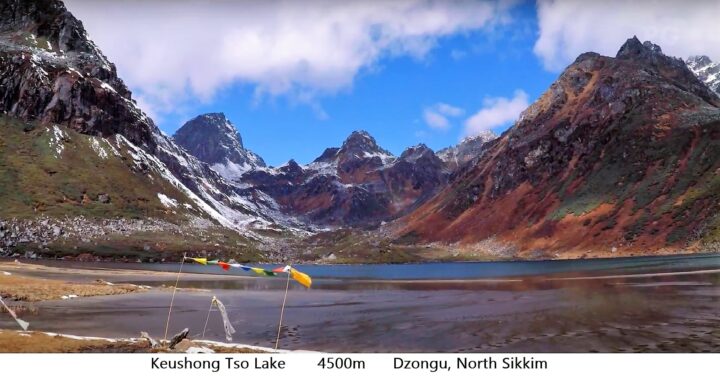
Best Homestays in Dzongu
Lingthem Lyang Homestay
Lingthem Lyang is the most popular and highest-rated homestay in Dzongu. It is situated almost at the top of the Lingthem area. Almost a 20 minutes steep uphill drive. Then you need to climb 162 stairs to reach the Lingthem Lyang homestay. This welcoming hard work will bring you spectacular views. Mouth-watering food and top-notch hospitality where they treat you like their family. A huge courtyard offers a tabletop view of the valley and mountains right from your room. Rustic Lepcha-style living and dining keep you grounded. I stayed at this homestay and it was a beautiful experience. Will be writing a detailed review on why you should select this homestay if it’s your first Dzongu trip.
Host: Phurba and Sangdup Lepcha at Lingthem Village, Upper Dzongu.
Contact: 9593781926, 8436000318
Email: [email protected]
Mayallyang Homestay
It is situated in the lower area of Lingthem near to the river. Mayallyang is also a popular and positively reviewed option. However, there will be many homes around this homestay.
Host: Mr. Gyatso Lepcha at Passingdang Village, Lower Dzongu.
Contact: 9434446088, 9647872434, 9002884972
Email: [email protected]
Rumlyang Homestay
I tried booking it but the road condition was not motorable because of unseasonal rains. The host offered honest advice and promptly returned the advance that I paid. I will be visiting Rumlyang Homestay once the monsoon gets over. Rumlyang Homestay is situated in Tingbong village across the river. The views of Mount Pandim and Kanchenjunga are spectacular from here. Experience the modest and humble Lepcha lifestyle in the lap of pristine nature.
Host: Karma Lepcha at Tingvong Village, Dzongu.
Contact: 8001608667, 7407345281
Lepcha Homestay
Lepcha homestay is another highly rated and positively reviewed homestay run by a beautiful family in Lingthem ward. It is 5min walk away from the Lingthem Lyang Homestay.
Host: Lepcha Home Stay C/O. Mr. & Mrs. Kachyo & Premit Lepcha at Lingthem.
Contact: 9800074211
Email: [email protected]
Now that you are done with Dzongu Travel Guide – Permit, Homestay, and Itinerary. You can start your preparations for a perfect Dzongu Trip.
Highlights of Dzongu
- Kangchenjunga and Mount Pandim view.
- Lingthem Monastery.
- Homestay Experience.
- Lingdem Sulphur Hotspring.
- Mantam Lake River Bed.
- Suspension Bridge and Bamboo Bridge connecting Tingbong.
- 2 Hour Jungle Trek behind Lingthem Lyang Homestay.
- Tingvong Monastery.
- Treks between various villages of Dzongu (Tingbong-Tolung-Sakyong-Pentong).
- Lingzya Waterfall.
- Keushong Lake Trek.
- Cultural and Culinary Experiences.
Have something to add to this Dzongu Travel Guide – Permit, Homestay, and Itinerary? Let us know in the comments if you have any queries or suggestions.
 MOTOLOGS Road Trip and Travel Guide
MOTOLOGS Road Trip and Travel Guide 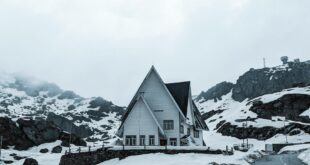

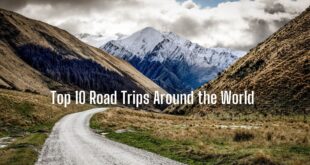
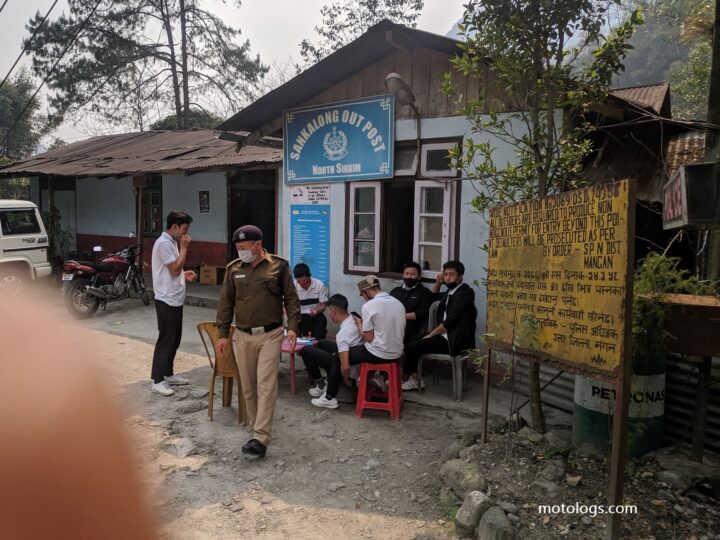
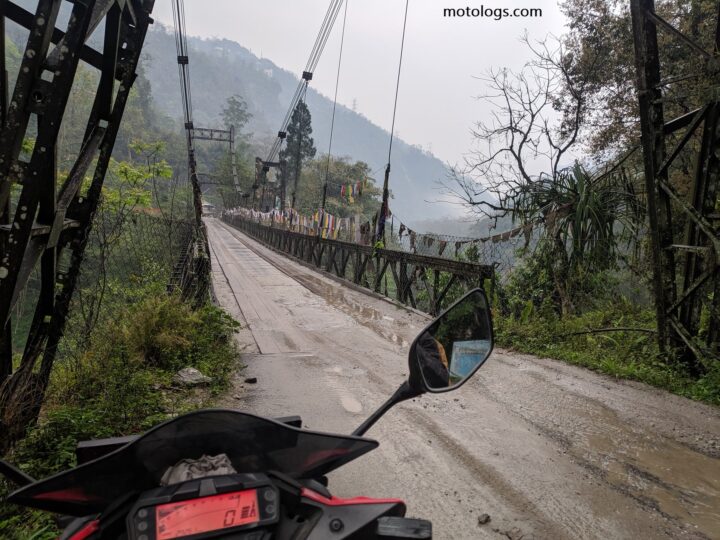
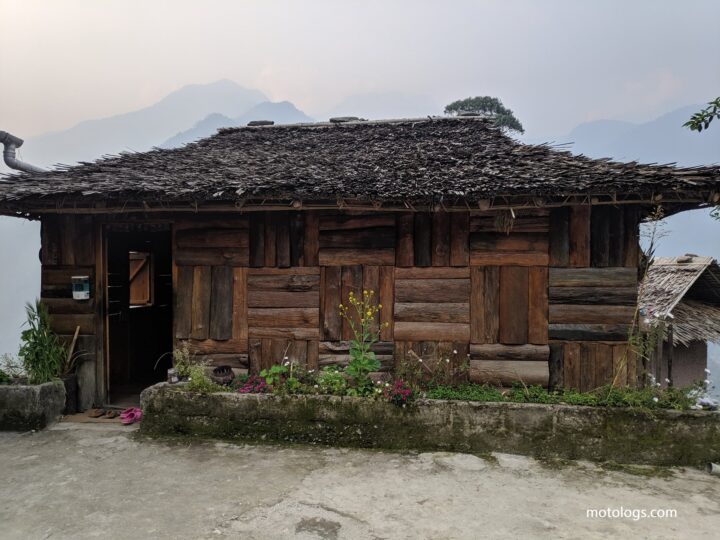
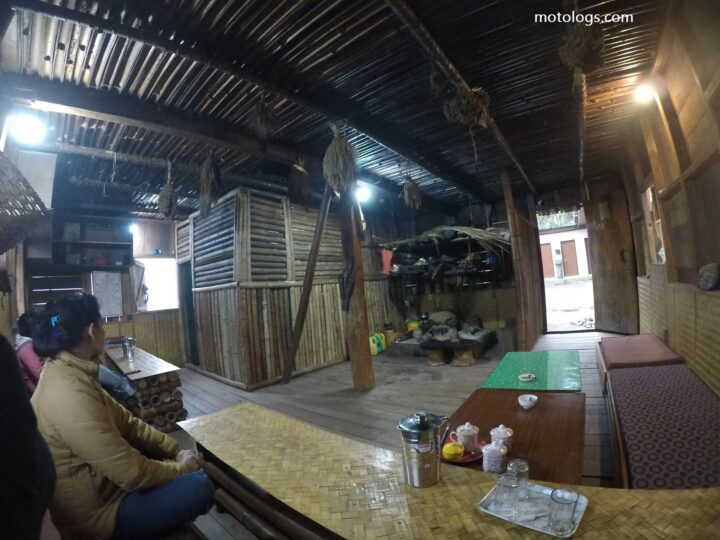
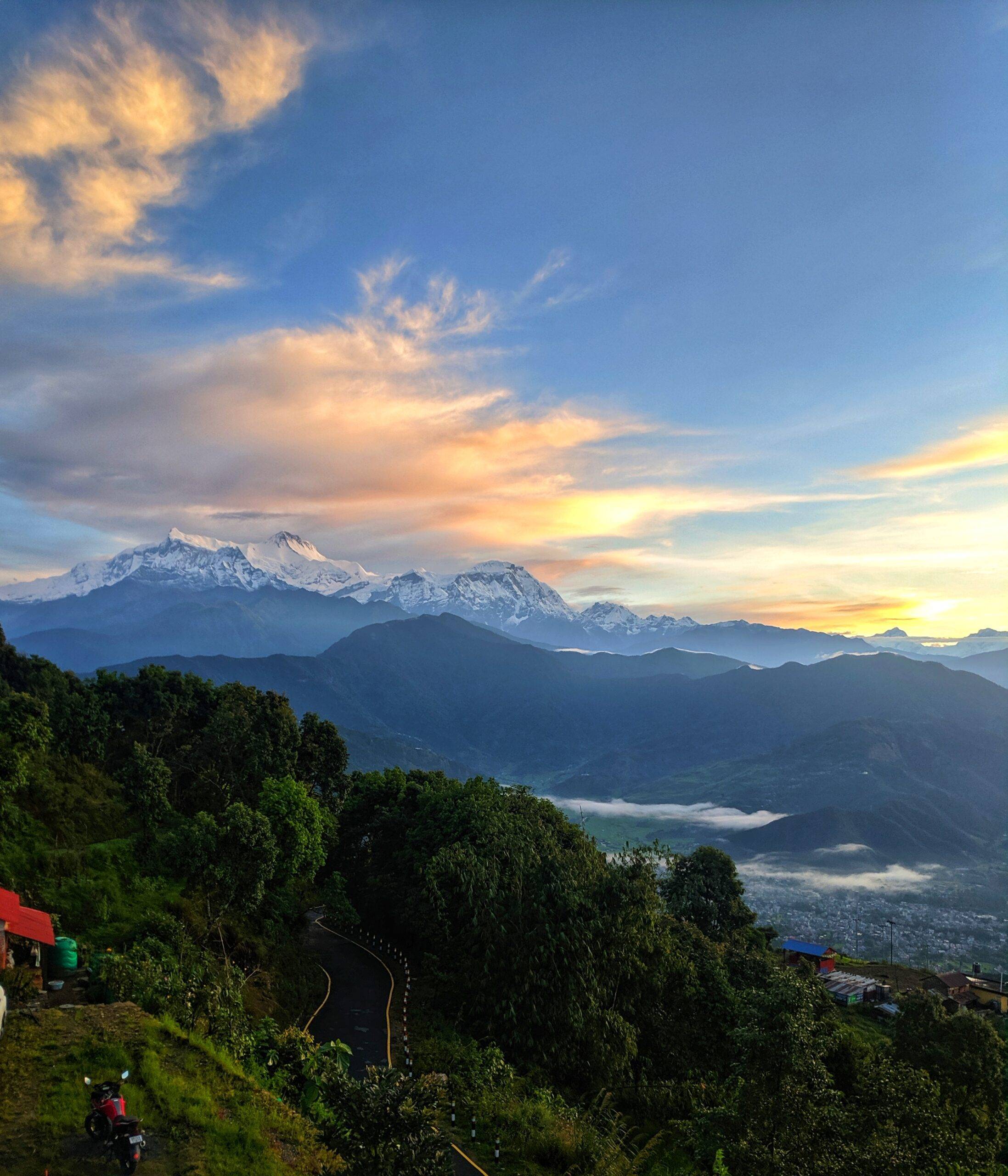
Thanks. This is really helpful and clears all doubts. How much it costs for Keushong Lake Trek in Dzongu?
Is Dzongu open for tourists now?
Sikkim will stay closed for tourists till 21 June 2021. I will update the article when it reopens for tourists.
thanks for your informative blog!